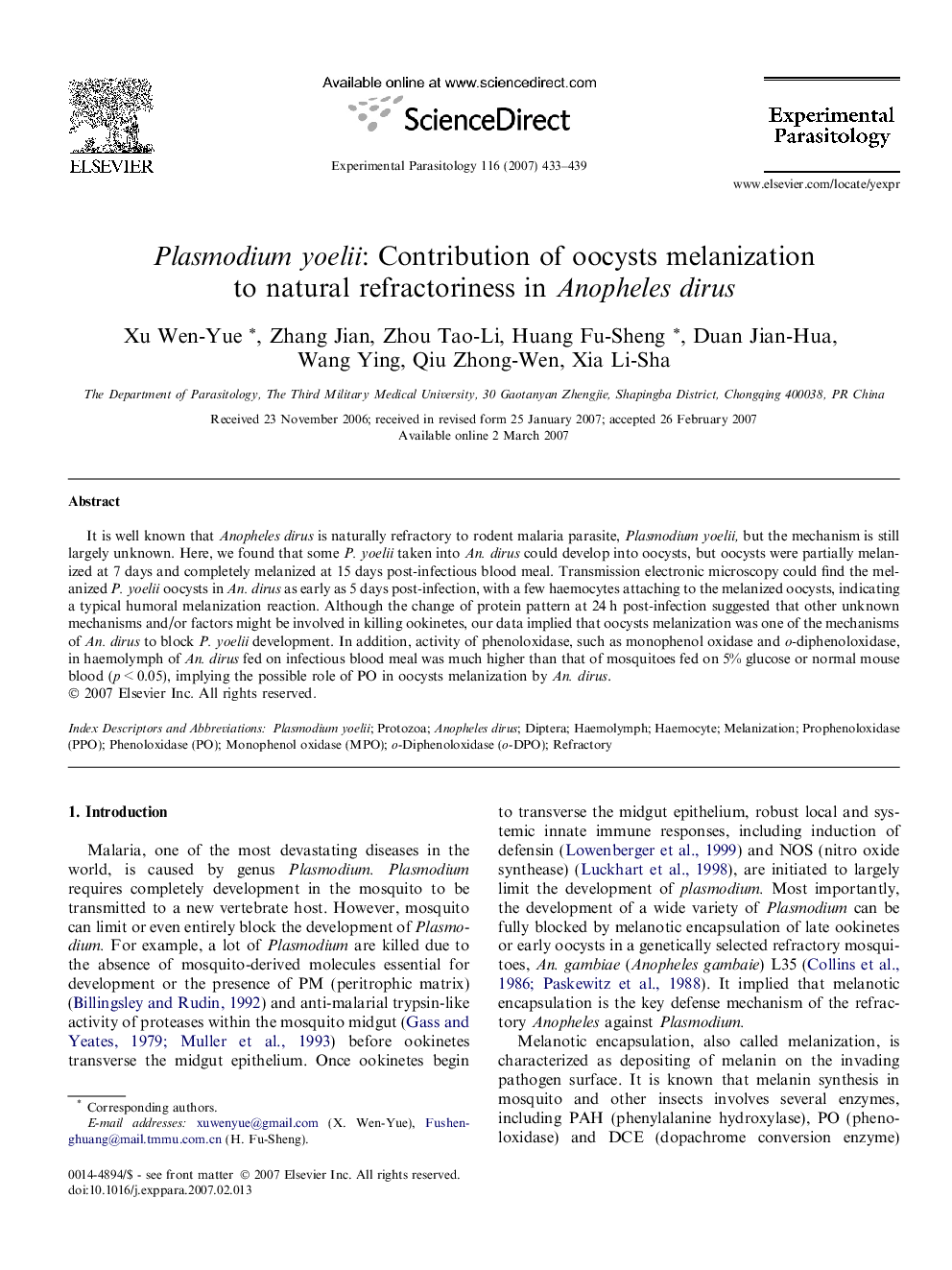| Article ID | Journal | Published Year | Pages | File Type |
|---|---|---|---|---|
| 6292413 | Experimental Parasitology | 2007 | 7 Pages |
Abstract
It is well known that Anopheles dirus is naturally refractory to rodent malaria parasite, Plasmodium yoelii, but the mechanism is still largely unknown. Here, we found that some P. yoelii taken into An. dirus could develop into oocysts, but oocysts were partially melanized at 7 days and completely melanized at 15 days post-infectious blood meal. Transmission electronic microscopy could find the melanized P. yoelii oocysts in An. dirus as early as 5 days post-infection, with a few haemocytes attaching to the melanized oocysts, indicating a typical humoral melanization reaction. Although the change of protein pattern at 24 h post-infection suggested that other unknown mechanisms and/or factors might be involved in killing ookinetes, our data implied that oocysts melanization was one of the mechanisms of An. dirus to block P. yoelii development. In addition, activity of phenoloxidase, such as monophenol oxidase and o-diphenoloxidase, in haemolymph of An. dirus fed on infectious blood meal was much higher than that of mosquitoes fed on 5% glucose or normal mouse blood (p < 0.05), implying the possible role of PO in oocysts melanization by An. dirus.
Related Topics
Life Sciences
Immunology and Microbiology
Parasitology
Authors
Xu Wen-Yue, Zhang Jian, Zhou Tao-Li, Huang Fu-Sheng, Duan Jian-Hua, Wang Ying, Qiu Zhong-Wen, Xia Li-Sha,
